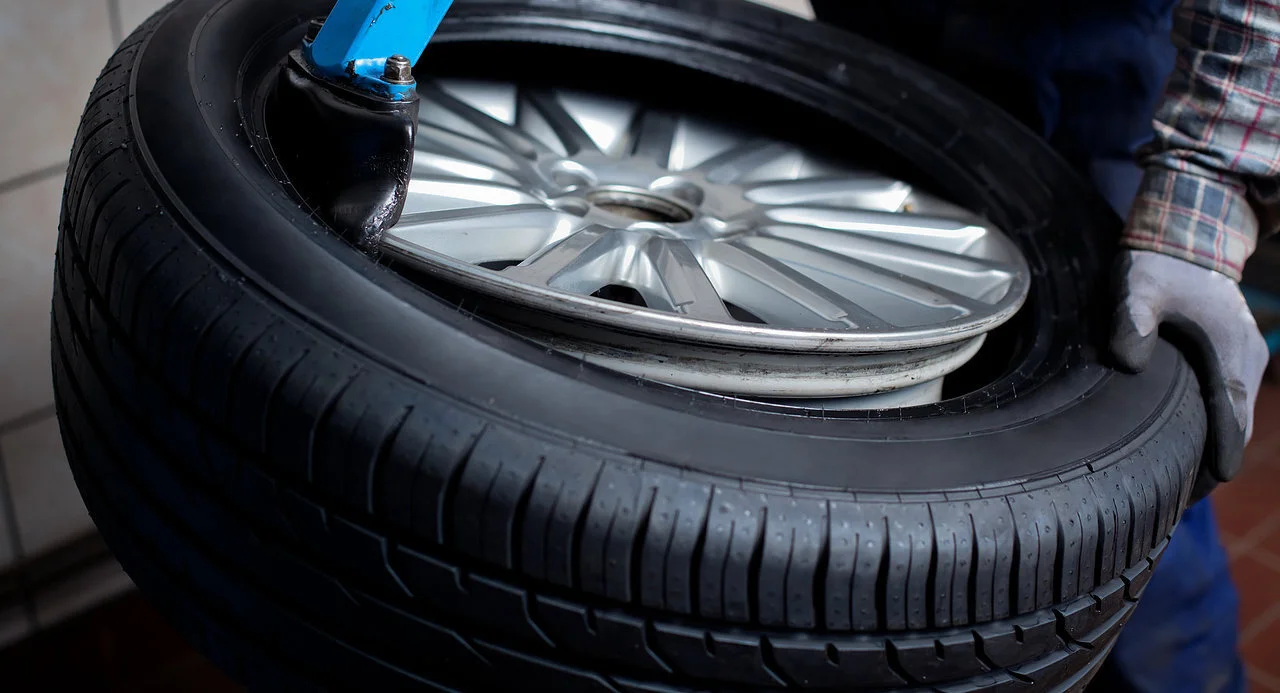WHEEL ALIGNMENT
Get your tyres properly aligned with us today
Incorrect balancing causes premature wear of tyres.
Wheel alignment is part of standard automobile maintenance that consists of adjusting the angles of the wheels so that they are perpendicular to the ground and parallel to each other.
The purpose of these adjustments is maximum tyre life and a vehicle that tracks straight and true when driving along a straight and level road. The primary angles are the basic angle alignment of the wheels relative to each other and to the car body. These adjustments are the camber, caster and toe.
Properly aligned wheels extend tyre life and improve fuel economy. It is recommended that a vehicle’s wheels be aligned at least once a year or every 15,000 kilometers.
When a car starts pulling to one side, most drivers suspect that the wheels might be out of alignment. Irregular tyre wear, vibration, and odd handling are other clues. Misalignment is caused by impacts from hitting potholes and bumps, loose steering or suspension components and wear from aging suspension components.
The Importance of proper Alignment
Why my vehicle is out of alignment?
When your vehicle is out-of-alignment, its suspension and steering systems no longer function at their intended angles resulting in rapid, uneven treadwear – the primary reason for requiring tyre replacement. Alignment issues typically occur as a result of wheel impact on damaged roads, speed ramps or curbs and/or wear and tear of suspension parts due to a vehicle’s high mileage.
How do you know you need an alignment
Misaligned tyres can cause uneven tyre wear, poor fuel economy, poor handling and an uncomfortable ride for you and your passengers.
We have identified four common ways to determine whether your vehicle requires a wheel alignment.
Four indications your vehicle requires an alignment:
1. Uneven tyre wear
Having misaligned wheels means your wheels are physically positioned at different angles. The difference may be slight but it will be enough to cause your tyres to wear unevenly. You can diagnose this by checking your tyres for even wear – if the tyres are the same height of tread from inside shoulder to ouside shoulder, you are probably okay. However, if one is significantly more worn than the other, it is probably time to consider an alignment and/or a tyre change.
2. Vehicle pulls hard to the left or right
Pulling hard to the left or right is a telltale sign that your vehicle needs a wheel alignment. If you feel as though you have to struggle with your steering wheel in order to keep your vehicle straight, we recommend getting a wheel alignment done as soon as possible.
3. Slight pulling
A good way to check your car’s alignment is to let go of the wheel for a couple seconds when driving in a straight line at low speed with no surrounding traffic or obstructions. If your vehicle is out of alignment, it will drift slightly to the right or left. We recommend performing this test in an empty parking lot that is not occupied by pedestrians, obstructions, or other vehicles.
4. Crooked Steering Wheel
If you’re driving down a straight stretch of road and you notice that your steering wheel is crooked, you might need a wheel alignment. You might notice this after you run over a curb, a pothole, or another type of obstacle in the road.
The Benefits of a Wheel Alignment
There are many benefits to having a wheel alignment performed on your vehicle. The economic benefits of an alignment include increased fuel efficiency and the maximization of your tyre life. Wheel alignments improve driver safety and comfort… and you get the added satisfaction of not having to fight with your steering wheel.


